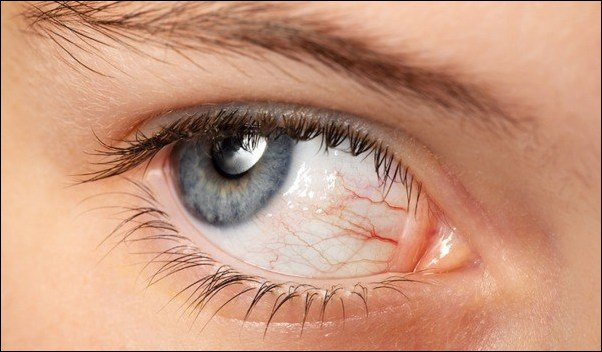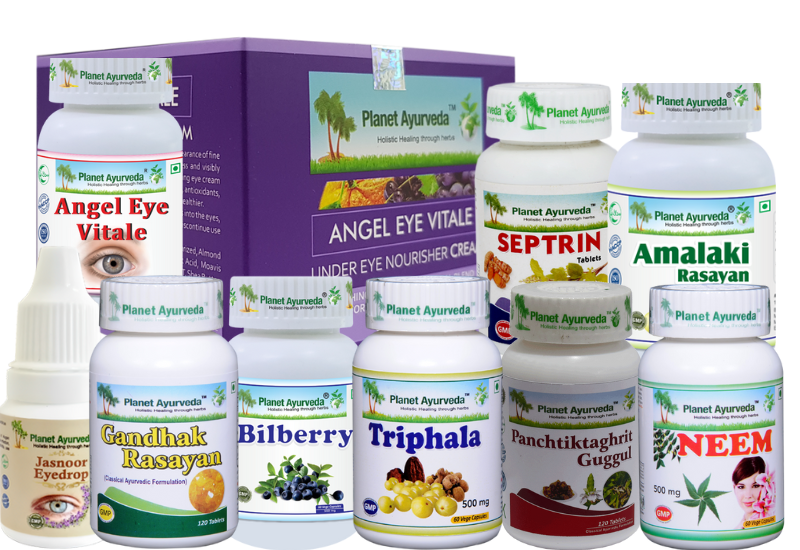Ocular Surface Disease Treament With Herbal Remedies

Abstract
Ocular Surface diseases are conditions which affect and damage the surface of the eyes. The eyes are the organs of the visual system which has the ability to receive and process visual functions. Mainly eyes detect light and get converted into electrochemical impulses in neurons. They take the light from the world and send visual information to the brain. Eye vision is the shape of a ball which varies in color from blue, to green and to all shades of brown. The eyes sit in the protective bony socket known as orbit with 6 extraocular muscles which are attached to the eyes. The surface of the eyes and inner surface is the eyelids which are covered with the conjunctiva. Tears usually lubricate the eye and the layers together known as tear film. Light gets focused into the eye and forms a dome-shaped portion called the cornea. The vitreous cavity lies in between the eyes and is a jelly-like structure. In this article, we are going to discuss the different types of ocular diseases and their causes with their ayurvedic aspect in detail.

Introduction
Ocular Surface disease damages the surface layers of the eyes, The most affected parts are the Cornea, the conjunctiva and the glandular network. It is a multifactorial disease which results in visual disturbances and instability of the tear film. There is an increased osmolarity of the tear film and the most common causes of the ocular surface disease are Anterior Blepharitis and meibomian gland dysfunction. The surface of the eye contains conjunctiva, the cornea and which are covered with epithelium. When the epithelium is damaged it causes Ocular surface disease. This damage causes pain, redness and sometimes permanent corneal injury.
- The cornea is the dome-shaped lens which covers the eyes, its main job is to focus the light which is coming out from the eye.
- The conjunctiva is a membrane which lines the eyelids and covers the white part of the eye.
- The glandular network is made of meibomian glands where the eyelashes are present and makes the tears.
If there are dry itchy eyes it may be due to dry air and dehydration which are common causes of dry eye but chronic dry eye leads to ocular surface disease (OSD). The acute stage of the ocular surface is the first 2 weeks after the onset of the symptoms. OSD (Ocular surface disease) affects the front surface of the eyes (cornea), as it may lead to permanent loss of vision and even blindness.
List of Ocular Surface Diseases
Dry Eye is the most common but other conditions such as Blepharitis, neurotrophic keratitis and sometimes meibomian gland are included.
1. Dry Eyes
It leads to eye infections and damage to the surface of the eyes which harms the quality of life. Does not form enough tears.
2. Blepharitis
It is when the eyelids get inflamed, which blocks the ducts near the base of the eyelashes. It further leads to issues such as dry eyes, chronic pink eyes and chalazion (blockage which causes swelling and hard lump). It is often divided into anterior and posterior parts, causing more redness and crusting on the eyelids.
3. Neurotrophic Keratitis
It is a degenerative condition which causes the impairment of the nerve, which further leads to reduced sensitivity of the cornea which results in dry eye.
4. Ocular Rosacea
It affects the eyes and causes itching, burning and redness. Further, it leads to dry eyes, blepharitis and complications like blindness.
5. Meibomian Gland Dysfunction- It is expected it does not produce sufficient oil. It leads to dry eyes and eyelid inflammation.
CAUSES
1. Causes of Dry eyes
- Aging
- Autoimmune conditions
- Allergies
- Vitamin A Deficiency
- Various hormonal conditions
2. Causes of Blepharitis
- Seborrheic Dermatitis
- Infections
- Eyelashes lice
- Clogged oil glands
3. Causes of Ocular Rosacea
- Genetics
- Bacteria
- Environmental factors
- Clogged glands.
It gets aggravated by- Alcohol, Hot and spicy foods and Strenuous exercise.
4. Meibomian Gland Dysfunctions- It includes</h3 >
- High cholesterol
- Autoimmune disorders
- Pink eye
Symptoms
1. Dry Eyes Symptoms Include
- Stinging and burning sensation in the eyes
- Watery eyes
- Difficulty in wearing lenses
- Difficulty in driving
- Blurry eyes
2. Blepharitis Symptoms Include
- Watery and red eyes
- Frequent blinking
- Sensitivity to lights
- Sticky eyes
3. Neurotrophic Keratitis Includes
- Dry Eyes
- Sensitivity to eyes
- Blurred vision
4. Ocular Rosacea Includes
- Dilated blood vessels
- Frequent infections of the eyes
- Blurred vision
- Itchy eyes
- Swollen eyelids
5. The Meibomian Gland Includes Symptoms
- Light sensitivity
- Watery eyes
- Crusted eyes
- Chalazia
Diagnosis
- Schirmer Test- Measures the volume of tear
- Dye Test- Test the surface of the condition of the eye
- Osmolarity test- Test the composition of tears
- MRI (Magnetic resonance imaging)- To rule the neurotrophic keratitis
Risk Factors
- Conjunctival Scarring
- Connective tissue disorder- Sjogren syndrome, Rheumatoid arthritis)
- Blepharitis- Isotretinoin (Accutane)
Treatment
- Eye drops
- Warm compressor
- Non-steroidal anti-inflammatory medications
- Eyelids scrub
- Artificial tears
Complication
- Corneal dry spots
- Corneal abrasions
- Corneal perforation
- Corneal Scarring
Ayurvedic Aspect
Eye diseases are due to imbalances of the doshas within the human body. It is mainly dominated by the fire element (Pitta Doshas). The vitiated doshas travel through the Siras (blood vessels) which reach the upper parts of the body which on reaching the eyes cause the dreadful disease. The eyes are the Seat of Alochaka Pitta which is mainly present in the eyes and is only responsible for taking light and initiating the process of vision. The Pitta is governed by Pachaka Pitta which functions under the direct control and influence of gut fire. Whenever there is an increase or decrease in Alochaka Pitta there is a problem with the Fire element. In ayurveda, Dry eye is correlated with Shushkaksipaka which is due to the vitiation of tridoshas. Blepharitis is a chronic inflammation which is correlated with Krimigranthi in ayurveda which is due to the vitiation of Kapha and Pitta doshas.
Chikitsa
1. Netradhara
It is washed with blends of liquids. It is a unique purging where a non-stop stream of medicated liquids is poured over the eyes. Mainly Triphala water is used for washing the eyes.
Benefits of Netra Dhara
- Relaxes the muscles of the eyes
- Enhances the vision
- Calms the muscles of the eyes
- Helpful in all Vaatadi doshas.
2. Netra Tarpanam
In this, a mixture is arranged which is set around the eyes and makes sure that oil should not spill from the batter which is around the eyes. Then the lukewarm ghrit is poured and remains there for 5 min so that eyes are pressed out and it is performed for 20-25 minutes.
Benefits of Netra Tarpanam
- Provides nourishment to harmed eyes
- Strengthens the muscles and nerves of the eyes
- Builds the facial nerves and muscles.
3. Anjanam and Kshalana
In this, the eyes are washed with medicated fluid and then a paste is applied with the help of a shalaka (pen-like instrument).
Benefits of Anjanam and Kshalana
- Strengthen the eyes which improves vision
- Removes the toxins
- Arrests the degenerative changes in eyes and relieves strain from eyes.
4. Pindi
It is the medicated paste which is applied and kept over the eyes with a thin cloth. The paste of Triphala powder is used as Pindi which is applied over the eyes.
5. Bidalaka
In this, the medicated paste is applied over the closed lids of the eyes such as a paste of Sandalwood is applied which soothes the eyes and is common in Pitta which causes various eye disorders.
6. Nasya
It is a process through which medicine is instilled through the nose as the diseases above the shoulders can be treated which Dhooma Nasya of medicated fumes which are indicated in eye disorders, such as Anu Taila, Shadbindu Taila and Ksheerabala Taila.
Herbal Remedies by Planet Ayurveda for Ocular Surface Disease
Planet Ayurveda is an ISO 9001:2015 Certified and US-FDA registered Ayurvedic Company which adhered to the objectives of its Ayurvedic products as it is mentioned in the Ayurvedic texts. The formulations which are made by planet ayurveda are without any preservatives, or additives and do not cause any side effects on the human body. The products manufactured at Planet Ayurveda are pure and gluten-free. For Ocular Surface Disease planet ayurveda provides many herbal supplements which are helpful in a healthy happy life.
Products List
- Angel Eye Vitale
- Saptamrit Loha
- Jasnoor Eye Drops
- Maha Triphala Ghrit
- Amalaki Rasayan
Products Description
1. Angel Eye Vitale
Angel Eye Vitale are polyherbal Capsules which are made by planet Ayurveda using Amla (Emblica officinalis), Gotu Kola (Centella Asiatica) and Bhringraj (Eclipta alba). It is useful in reducing inflammation and improving the irritation of the skin. Inhibit the oxidising free radicals in the living cells.
Dosage- 1 capsule twice daily after meals with plain water.
2. Saptamrit Loha
Saptamrit Loha is a classical Ayurvedic product which is formulated by planet ayurveda using Loha bhasma (Calx of Iron), Mulethi (Glycyrrhiza glabra) and more. It is helpful in managing anorexia, balances the pitta doshas and is useful in increasing the levels of blood. Has Antibacterial and Anti-viral properties.
Dosage- 2 tablets twice daily with plain water after meals.
3. Jasnoor Eye Drops
Jasnoor Eye Drops is an ayurvedic formulation which is helpful in improving eyesight and managing the various disorders of the eyes. As it contains various ingredients such as Neem (Azadirachta indica), Amalaki (Emblica officinalis), Shwet Chandan (Santalum album) and many more. It is helpful in improving the overall health of the eyes and has anti-inflammatory properties, which reduce pain and inflammation and is Tridoshas shamaka.
Dosage- 3 drops of eye drops in each eye twice daily.
4. MahaTriphala Ghrit
MahaTriphala Ghrit is a Classical Ayurvedic product which is formulated by planet ayurveda using Bhringraj (Eclipta alba), Vasa (Adhatoda vasica), Pipal (Ficus religiosa), Choti Kateri (Solanum Surattense) and many more. It is helpful in regulating the conditions of the eyes and promotes strong and sharp eyesight. Has Anti-inflammatory properties which supports the formation of blood.
Dosage- ½ teaspoon twice daily after meals.
5. Amalaki Rasayan
Amalaki Rasayan is a single herbal Capsule which is made by planet Ayurveda using a Standardized Extract of Amalaki (Emblica officinalis). It is the richest source of Vitamin C which pacifies all the tridoshas. Is a natural Anti-oxidant which lowers the cholesterol level and is a memory enhancer.
Dosage- 1 capsule twice daily after meals with plain water.
Contact Planet Ayurveda Support Team to provide you the costing / ordering and delivery information at – costing.planetayurveda@gmail.com or Call at 0172-521-4040 (India), +91-172-521-4040 (Outside India) or Whatsapp at (+91) 9915-593-604
Conclusion
The eyes are the organs of the visual system which has the ability to receive and process visual functions. Mainly eyes detect light and get converted into electrochemical impulses in neurons. Ocular Surface disease damages the surface layers of the eyes, The most affected parts are the Cornea, the conjunctiva and the glandular network. It is a multifactorial disease which results in visual disturbances and instability of the tear film. It is mainly dominated by the fire element (Pitta Doshas). The vitiated doshas travel through the Siras (blood vessels) which reach the upper parts of the body which on reaching the eyes cause the dreadful disease. Further, we discussed herbal supplements from Planet ayurveda which are helpful without causing any side effects.





